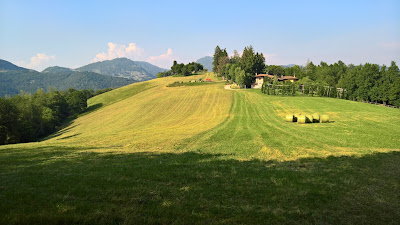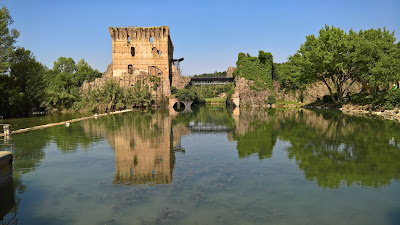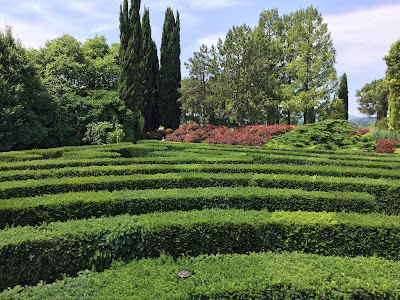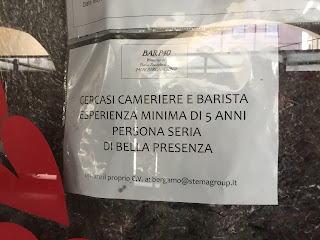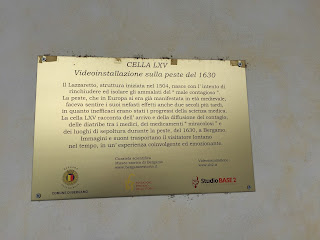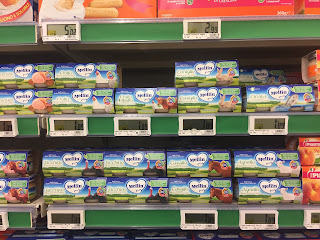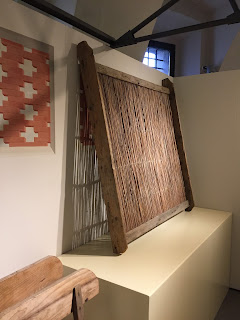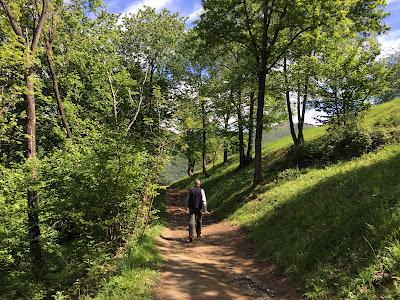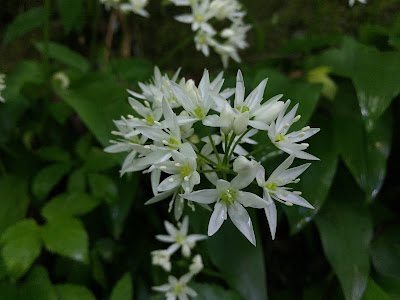Background
Nouns in the Italian language have a gender, that is, a noun can be male or female, and in some cases, both. Specifically, Italian, like other Romance languages, has a
grammatical gender where nouns must agree with other parts of the language, such as articles, pronouns, and adjectives. And therein lies the problem: you have to know the gender to make correct agreements. And while there is a rule of thumb based on word ending to help you predict the gender, it's useful to be aware of the different classes of exceptions.
In modern English, except for a few cases (see
Gender in English), nouns don't have a gender. Therefore, when speaking or writing English, you don't worry about a car being feminine as it is in Italian (
la macchina) or the sun being masculine (
il sole). Sure, we might refer to a car as a “she” or the sun as “he” if we want to, but it's done through pronouns, which is pretty easy. My yellow car and my yellow sun both use "my yellow". Using the same examples, in Italian there needs to be grammatical agreement, therefore
la mia macchina gialla and
il mio sole giallo, my yellow car and my yellow sun, respectively.
Rule of Thumb
A rule of thumb for Italian nouns is that singular nouns ending in 'o' are masculine while singular nouns ending in 'a' are feminine. Singular nouns ending in 'o' become plural (usually*) by changing the ending to 'i'. Singular nouns ending in 'a' become plural (usually*) by changing the ending to 'e'. Examples include
il palazzo/
i palazzi,
l'amico/gli amici,
la casa/le case, and
la ragazza/le ragazze. So, in general, we just need to look at the ending to work out the gender.
* As you would expect, exceptions exist like
tempio/tempi and
giacca/giacche.
The majority of Italian nouns follow the rule of thumb above. But how many? It turns out you can get an estimate by turning to databases and archives of the Italian language. The prestigious Italian language institute
Accademia della Crusca maintains a list of such resources. It's a daunting list, but with a little poking around it starts to make sense. For example, the most well-known list of words is the
Lessico di frequenza dell'italiano parlato (Corpus LIP). The corpus includes 469 texts of transcriptions of spoken word, resulting in a list of approximately 490,000 words. The transcriptions were taken from speakers in four cities (Milan, Florence, Rome and Naples) and in numerous situations, such as face-to-face conversations or a lecture in school.
To use the Corpus LIP data, you can download the data to a CSV file, and import into a spreadsheet. Sort the table by frequency and filter for just nouns. You will find that for the top 500 nouns:
- Following the rule of thumb:
- 40% are nouns ending in 'o' that are masculine
- 31% are nouns ending in 'a' that are feminine
- Not following the rule of thumb:
- 11% are nouns ending in 'e' that are masculine
- 12% are nouns ending in 'e' that are feminine
- 5% are nouns with other endings, e.g., ending with 'a' that are masculine, or nouns that can be either masculine or feminine
Based on this data, we can say that the rule of thumb for predicting the gender is good for about 70% of Italian nouns.
Next, let's take a look at the work of Scudit, Scuola d'Italiano Roma, which has created a curated list of
333 essential nouns that should absolutely be part of the vocabulary of beginning Italian students. Scudit starts with the LIP corpus and then adds and removes words from the list to arrive at a vocabulary they feel is representative of what beginning students should know. Though it's a different end goal than just looking at word frequency, it's interesting to see what the Scudit word list reveals about the applicability of the rule of thumb. Answer: the Scudit site states that about 70% are nouns ending in 'o' that are masculine or ending in 'a' that are feminine, comparable to what was calculated above.
Exception Lists
I started
my descent into madness out modestly maintaining a list of Italian nouns that end in 'e' and are feminine in gender (e.g.,
la chiave). I did this as a learning exercise, but soon it expanded to tracking classes of nouns that deviated from the 70% rule of thumb described above.
Why is it important to be familiar with Italian nouns that don't follow the norm? As mentioned above, to speak and write correctly, there needs to be agreement between nouns and related articles, pronouns, and adjectives. Doing so leads to better communication and requires less effort from listeners and readers. Many of the nouns that deviate from the rule of thumb appear surprisingly often in everyday conversation and writing. For example, an Italian will understand you just fine if you say (incorrectly) “love is beautiful” as “
l'amore è bella” instead of correctly as “
l'amore è bello”, but the correct form requires less effort by the listener. Think of how many times you've heard someone new to the English language swap “she” for “he” or vice-versa. You know what the intent is and probably the context, but you stop – even if for a fraction of a second – to parse the word and correct it in your mind. It's that kind of extra cognitive work you'd like to avoid in people listening to or reading your Italian.
Along with consulting these lists, it's worthwhile to find your favorite Italian grammar guide and read up on nouns. Or, at least consult the quick overview in Wikipedia,
Italian Language, particularly the part on
nouns. Also, try the Wikibooks page for
Italian/Nouns.
How did I come up with these lists? These are words I've encountered in every day, talking with Italians and reading. Admittedly, a few of the words are a little obscure such as
rupe (cliff) and
isteresi (hysteresis), and are more of an indication of what catches my eye.
Examples of nouns that are feminine and in the singular end in 'e'
- Rule of thumb: words ending in 'zione', 'ice', 'ite', 'itudine', 'trice', and 'ie' are generally feminine
- Examples:
- l'abbreviazione (le abbreviazioni), l'abitudine (le abitudini), l'abside (le absidi), l'agave (le agavi), l'alice (le alici), l'anagrafe (le anagrafi), l'anidride (le anidridi), l'apocalisse (gli apocalissi), l'apocope (le apocopi), l'appendice (le appendici), l'arte (le arti), l'asse (le assi), l'assise, l'astronave (le astronavi), la bagarre, la balbuzie, la base (le basi), la botte (le botti), la brace (le braci), la calce (le calci), la canizie (le canizie), la canzone (le canzoni), la capitale (le capitali), la caprese (le capresi), la carnagione, la carne (le carni), la carotide (le carotidi), la cartilagine (le cartilagini), la cassaforte (le casseforti), la catastrofe (le catastrofi), la cattedrale (le cattedrali), (la classe (le classi), la chiave (le chiavi), la cicatrice (le cicatrici), la cimice (le cimici), la coesione (le coesioni), la colazione (le colazioni), la colite (le coliti), la collazione (le collazioni), la coltre (le coltri), la compagine (le compagini), la consonante (le consonanti), la conversazione (le conversazioni), la cornice (le cornici), la corte (le corti), la costante (le costanti), la cuspide (le cuspidi), la cute, la deduzione (le deduzioni), la dinamite (le dinamiti), la dose (le dosi), la dote (le doti), l'ecatombe (le ecatombi), l'eclisse (le eclissi), l'effigie (le effigi), l'ellisse (le ellissi), l'epatite (le epatiti), l'epigrafe (le epigrafi), l'estate (le estati), la falce (le falci), la fame, la falange (le falangi), la faringe (le faringi), la fase (le fasi), la fede (le fedi), la felci (le felci), la fenice (le fenici), la frase (le frasi), la foce (le foci), la fonte (le fonti), la forbice (le forbici), la frazione (le frazioni), la fronte (le fronti), la fuliggine, la fune (le funi), la funzione (le funzioni), la gente (le genti), la grandine (le grandini), la guarnigione (le guarnigioni), l'igiene,, l'immagine (le immagini), l'indagine (le indagine), l'indole (le indoli), l'iniezione (le iniezioni), l'informazione (le informazioni), l'iride (le iridi), la lapide (le lapidi), la laringe (le laringi), la legge (le leggi), la lendine (le lendini), la lente (le lenti), la lentiggine (le lentiggini), la lesione (le lesioni), la lince (le linci), la lite (le liti), la latitudine (le latitudini), la longitudine (le longitudini), la luce (le luci), la madre (le madri), la magnetite (le magnetiti), la maionese (le maionesi), la manifestazione (le manifestazioni), la matrice (le matrici), la meningite (le meningiti), la mente (le menti), la merce (le merci), la metope (le metopi), la miriade (le miriadi), la moglie (le mogli), la mole (le moli), la morte (le morti), la mutanda (le mutande), la nave (le navi), la neve (le nevi), la notte (le notti), le nozze, la nube (le nubi), l'ode (le odi), l'origine (le origini), l'otite (le otiti), l'osservazione (le osservazioni), la pace (le paci), la palude (le paludi), la parete (le pareti), la parte (le parti), la passione (le passioni), la patente (le patenti), la pelle (le pelli), la penale (le penali), la pensione (le pensioni), la pernice (le pernici), la pertosse (le pertossi), la pieve (le pievi), la pisside (le pissidi), la plebe (le plebi), la piramide (le piramidi), la pisside (le pissidi), la plebe (le plebi), la polmonite (le polmoniti), la polvere (le polveri), la pomice (le pomici), la posizione (le posizioni), la prigione (le prigioni), la progenie (le progenie), la prole (i proli), la propaggine (le propaggini), la psiche, la pulsione (le pulsioni), la questione (le questioni), la radice (le radici), la ragade (le ragadi), la ragione (le ragioni), la redazione (le redazioni), la redine (le redini), la regione (le regioni), la religione (le religioni), la rete (le reti), la rondine (le rondini), la routine (le routine), la ruggine, la rupe (le rupi), la salsedine (i salsedini), la salute, la scansione (le scansioni), la scrittrice (le scrittrici), la sede (le sedi), la segale, la selce (le selci), la semente (le sementi), la senape (le senape), la serie (le serie), la sete, la sfinge (le sfingi), la siepe (le siepi), la sindrome (le sindromi), la sineddoche (le sineddochi), la solitudine (le solitudini), la sorgente (le sorgenti), la sorte (le sorti), la specie (le specie), la sinusite (le sinusiti), la stagione (le stagioni), la stalagmite (le stalagmiti), la stalattite (le stalattiti), la stele (le stele), la stirpe (le stirpi), le stoviglie, la strage (le stragi), la stupidaggine (le stupidaggini), la superficie (le superfici), la tangenziale (le tangenziali), la tenebra (le tenebre), la tigre (le tigri), la tiroide (le tiroidi), la torre (le torri), la tosse (le tossi), la tradizione (le tradizioni), la tranche (le tranche), la trave (le travi), la triade (le triadi), l'ustione (le ustioni), la valle (le valli), la variabile (le variabili), la venere (le veneri), la vernice (le vernici), la veste (le vesti), la vite (le viti), la vocale (le vocali), la voce (le voci), la voragine (le voragini)
Examples of nouns that are masculine and in the singular end in 'e'
- Rule of thumb: words ending in 'ore', 'tore', 'one', 'ale', 'ile', and 'è' are generally masculine
- Examples:
- l'acume (gli acumi), l'addome (gli addomi), l'airone (gli aironi), l'albore (gli albori), l'albume (gli albumi), l'allarme (gli allarmi), l'allergene (gli allergeni), l'alluce (gli alluci), l'alone (gli aloni), l'altoparlante (gli alto parlanti), l'ambiente (gli ambienti), l'amore (gli amore), l'androne (gli androni), l'animale (gli animali), l'animo (gli animi), l'apice (gli apici), l'aprile, l'architrave (gli architravi), l'arciere (gli arcieri), l'argine (gli argini), l'arsenale (gli arsenali), l'aruspice (gli aruspici), l'aspirapolvere (gli aspirapolvere), l'asteroide (gli asteroide), l'astice (gli astici), l'atlante (gli atlanti), l'attaccabrighe (gli attaccabrighe), l'attore (gli attori), l'auge, l'autore (gli autori), l'alveare (gli alveari), il balcone (i balconi), il bancale (i bancali), il bancone (i banconi), il barcone (i barconi), il barile (i barili), il bastione (i bastioni), il battente (i battenti), il baule (i bauli), il bemolle (i bemolli), il bene (i beni), il bestiame (i bestiami), il bestione (i bestioni), il bicchiere (i bicchieri), il bicipite (i bicipiti), il bidone (i bidoni), il bilocale (i bilocali), il bisonte (i bisonti), il bottone (i bottoni), il bracciale (i bracciali), il bue (i buoi), il buffone (i buffoni), il cacciavite (i cacciaviti), il cadavere (i cadaveri), il calice (i calici), il cameriere (i camerieri), il caffè (i caffè), il cafone (i cafoni), il calabrone (i calabroni), il calzone (i calzoni), il campanile (i campanili), il campione (i campioni), il canale (i canali), il cane (i cani), il canile (i canili), il cannocchiale (i cannocchiali), il canone (i canoni), il cantiere (i cantieri), il capezzale (i capezzali), il cappone (i capponi), il carabiniere (i carabinieri), il carattere (i caratteri), il carbone (i carboni), il carcame (i carcami), il carcere (i carceri), il cardinale (i cardinali), il cardine (i cardini), il cartone (i cartoni), il casale (i casali), il catrame, il caviale, il cellulare (i cellulari), il ciclone (i cicloni), il ciclope (i ciclopi), il clamore (i clamori), il clistere (i clisteri), il codice (i codici), il coefficiente (i coefficienti), il cognome (i cognomi), il colle (i colli), il colore (i colori), il concime (i concimi), il confine (i confini), il consigliere (i consiglieri), il contenitore (i contenitori), il continente (i continenti), il copione (i copioni), il cortile (i cortili), il costume (i costumi), il cotone (i cotoni), il crescione (i crescioni), il crimine (i crimini), il crinale (i crinali), il culmine (i culmini), il cuore (i cuori), il davanzale (i davanzali) il demone (i demoni), il detergente (i detergenti), il dettame (i dettami), il diabete (i diabeti), il diamante (i diamanti), il dicembre, il dolore (i dolori), il dottore (i dottori), il duce (i duci), l'ente (gli enti), l'equatore, l'eroe (gli eroi), l'errore (gli errori), l'esponente (gli esponenti), l'etere (gli eteri), il elettrone (gli elettroni), l'erede (gli eredi), l'eucariote (gli eucarioti), il fanale (i fanali), il fannullone (i fannulloni), il fante (i fanti), il fasciame (i fasciami), il favore (i favori), il fiele, il fienile (i fienili), il fiore (i fiori), il fiume (i fiumi), il flacone (i flaconi), il focolare (i focolari), il fogliame (i fogliami), il folclore, il folle (i folli), il forte (il forti), il fotone (i fotoni), il frantume (i frantumi), il frate (i frati), il fucile (i fucili), il fulgore (i fulgori), il fulmine (i fulmini), il fumatore (i fumatori), il funerale (i funerali), il furgone (i furgoni), il furore (i furori), il garzone (i garzoni), il genere (i generi), il genitore (i genitori), il germe (i germi), il giornale (i giornali), il giudice (i giudici), il glicine (i glicini), il glutine (i glutini), il golpe, il gonfalone (i gonfaloni), il gradiente (i gradienti), il gregge (i greggi), il grembiule (i grembiuli), il grifone (i grifoni), il guaglione (i guaglioni), l'idrante (gli idranti), l'incidente (gli incidenti), l'inferiore (gli inferiori), l'inglese (gli inglesi), l'insieme (gli insiemi), l'interesse (gli interessi), l'istante (gli istanti), il karaoke (i karaoke), il lagnone (i lagnoni), il lampone (i lamponi), il latice (i latici), il latte, il legame (i legami), il lerciume (i lerciumi), il letame (i letami), il levante (i levanti), il levriero (i levrieri), il limite (i limiti), il limone (i limoni), il liquore (i liquori), il litorale (i litorali), il livore (i livori), il liquame (i liquami), il locale (i locali), il maggiore (i maggiori), il maiale (i maiali), il male (i mali), il malessere (i malesseri), il mangime (i mangimi), il maquillage, il marciapiede (i marciapiedi), il mare (i mari), il margine (i margini), il marrone (i marroni), il marzapane (i marzapani), il materiale (i materiali), il melone (i meloni), il meme (i memi), il mese (i mesi), il mestiere (i mestieri), il mestolone (i mestoloni), il miele (i miele), il milione (i milioni), il minestrone (i minestroni), il missile (i missili), il mobile (i mobili), il monsone (i monsoni), il monte (i monti), il moscone (i mosconi), il motore (i motori), il movente (i moventi), il natale, il neutrone (i neutroni), il nome (i nomi), l'occidentale (gli occidentali), l'occidente, l'orbe (gli orbi), l'ordine (gli ordini), l'orientale (gli orientale), l'oriente, l'orizzonte (gli orizzonti), l'ormone (gli ormoni), l'ospedale (gli ospedali), l'oste (gli osti), l'ottobre, l'ottone (gli ottoni), l'ovile (gli ovili), il pacciame (i pacciami), il padiglione (i padiglioni), il padre (i padri), il paese (i paesi), il pallone (i palloni), il palmipede (i palmipedi), il pallore (i pallori), il pane (i pani), il panforte (i panforti), il pantalone (i pantaloni), il paracadute (i paracadute), il paragone (i paragoni), il parere (i pareri), il parruccone (i parrucconi), il pattume (i pattumi), il pedone (i pedoni), il pellame (i pellami), il pene (i peni), il pepe, il peperone (i peperoni), il pensatore (i pensatori), il pepe (i pepi), il pesce (i pesci), il piacere (i piaceri), il piccione (i piccioni), il piede (i piedi), il pietrame (i pietrami), il pigliamosche (i pigliamosche), il pioniere (i pionieri), il pitone (i pitoni), il plotone (i plotoni), il pollame (i pollami), il pollice (i pollici), il polline (i pollini), il polpettone (i polpettoni), il poltrone (i poltroni), il ponte (i ponti), il portale (i portali), il possibile (i possibili), il predone (i predoni), il presente (i presenti), il presepe (i presepi), il presidente (i presidenti), il presule (i presuli), il prodiere (i prodieri), il professore (i professori), il proiettile (i proiettili), il pronome (i pronomi), il propulsore (i propulsori), il protone (i protoni), il pugnale (i pugnali), il quartiere (i quartieri), il rame, il rancore (i rancori), il rappresentante (i rappresentati), il re (i re), il reame (i reami), il regime (i regimi), il rene (i reni), il rettile (i rettili), il rigore (i rigori), il rione (i rioni), il ristorante (i ristoranti), il rituale (i rituali), il rognone (i rognoni), il rottame (i rottami), il rudere (i ruderi), il rumore (i rumori), il sacerdote (i sacerdoti), il salame (i salami), il sale (i sali), il salmone (i salmoni), il salone (i saloni), il sangue, il sanitario (i sanitari), il sapone (i saponi), il sartiame (i sartiami), il satellite (i satelliti), lo scaffale (gli scaffali), lo sciame (gli sciami), lo scimpanzé (gli scimpanzé), lo schienale (gli schienali), il scibile, lo sciame (gli sciami), il scrittore (i scrittori), lo scroccone (gli scrocconi), il sedime (i sedimi), il segnale (i segnali), il semaforo (i semafori), il seme (i semi), il sermone (i sermoni), il serpente (i serpenti), il settembre, il settore (i settori), lo sfasciume (gli sfasciumi), lo sgrassatore (gli sgrassatori), il sifone (i sifoni), il signore (i signori), lo spacciatore (gli spacciatori), lo spargisale (gli spargisali), lo spartiacque (gli spartiacque), lo spessore (gli spessori), lo spumante (gli spumanti), il sognatore (i sognatori), il sole (i soli), lo splendore (gli splendori), lo sporcaccione (gli sporcaccioni), lo stame (gli stami), lo stile (gli stili), lo stipite (gli stipiti), lo storione (gli storioni), lo studente (gli studenti), lo stupefacente (gli stupefacenti), il sudiciume (i sudiciumi), il sudore (i sudori), il tagliere (i taglieri), il tampone (i tamponi), il tè (i tè), il tegame (i tegami), il temporale (i temporali), il tendine (i tendini), il tendone (i tendoni), il tepore, il termine (i termini), il termosifone (i termosifoni), il terrore (i terrori), il tifone (i tifoni), il timone (i timoni), il tizzone (i tizzoni), il torace (i toraci), il torpore, il torrente (i torrenti), il totale (i totali), il trattore (i trattori), il tribunale (i tribunali), il tritone (i tritoni), il troncone (i tronconi), il tulle, il tumore (i tumori), il turbante (i turbanti), l'utensile (gli utensili), l'umore (gli umori), l'usciere (gli uscieri), l'utente (gli utenti), il vallone (i valloni), il valore (i valori), il vapore (i vapori), il vasellame (i vasellami), il vate (i vati), il verme (i vermi), il versante (i versanti), il vertice (i vertici), il vimine (i vimini), il vinile (i vinili), il volume (i volumi), il vortice (i vortici), lo zatterone (gli zatteroni)
Examples of nouns that are feminine and in the singular end in 'i'
Includes mostly obscure, scientific words.
- l'aferesi, l'affittasi, l'analisi (le analisi), l'anamnesi (le anamnesi), l'antesi (le antesi), l'antitesi (le antitesi), l'apodosi (le apodosi), l'apoteosi (le apoteosi) la bici (le bici), la crisi (le crisi), la diatriba (le diatribe), la diocesi (le diocesi), la disbiosi, l'enclisi (le enclisi), l'enfasi, la genesi (le genesi), la gommosi, l'ipofisi (le ipofisi), l'ipotesi (le ipotesi), l'isteresi (le isteresi), la metastasi (le metastasi), la metamorfosi (le metamorfosi), la metropoli (le metropoli), la micosi (le micosi), la necropoli (le necropoli), l'oasi (le oasi), l'ortesi, l'osmosi (le osmosi), la paracentesi, la paralisi (le paralisi), la parentesi (le parentesi), la partenogenesi (le partenogenesi), la perifrasi, la prassi (le prassi), la prognosi (le prognosi), la profilassi (le profilassi), la protasi (le protasi), la protesi (le protesi), la psicosi, la psoriasi, la schisi (le schisi), la sarcoidosi (le sarcoidosi), la sepsi (le sepsi), la silicosi (le silicosi), la sinapsi (le sinapsi), la sinossi (le sinossi), la sintassi (le sintassi), la sintesi (le sintesi), la stasi (le stasi), la stenosi (le stenosi), (la tesi (le tesi), la trombosi (le trombosi), la tubercolosi
Examples of nouns that are masculine and in the singular end in 'a'
- l'aforisma (gli aforismi), l'amalgama (gli amalgami), l'analemma (gli analemmi), l'anatema (gli anatemi), l'anagramma (gli anagrammi), l'automa (gli automa), l'aroma (gli aromi), il basalioma (i basaliomi), il boa (i boa), il carisma (i carismi), il cinema (i cinema), il clima (i climi), il clisma (i clismi), il colera, il comunista (i comunisti), il crocevia (i crocevia), il cromosoma (i cromosomi), il diagramma (i diagrammi), il digramma (i digrammi), il dilemma (i dilemmi), il diploma (i diplomi), il dramma (i drammi), il duca (i duchi), l'edema (gli edemi), l'elettrocardiogramma (gli elettrocardiogrammi), l'ematoma (gli ematomi), il fantasma (i fantasmi), il fonema (i fonemi), il genoma (i genomi), il giornalista (i giornalisti), il gorilla (i gorilla), il grafema (i grafemi), il lemma (i lemmi), il lessema (i lessemi), il lilla (colore), il lillà (pianta), il magma (i magmi), il marasma (i marasmi), il melanoma (i melanomi), il miasma (i miasmi), il microbiota (i microbioti), il morfema (i morfemi), l'ologramma (gli ologrammi), il panorama (i panorami), il papà (i papà), il parabrezza (i parabrezza), il paradigma (i paradigmi), il pianeta (i pianeti), il pigiama (i pigiami), il pitogramma (i pittogrammi), il plasma (i plasmi), il podestà, il poeta (i poeti), il problema (i problemi), il programma (i programmi), il profeta (i profeti), il satana (i satana), il schema (gli schemi), il sintagma (i sintagmi), il sisma (i sismi), il sistema (i sistemi), lo stratagemma (gli stratagemmi), il tema (i temi), il teorema (i teoremi), il trauma (i traumi), il trigramma (i trigrammi)
Examples of nouns that are masculine and in the singular end in 'i'
- l'alibi, il bignami, il bisturi, il brindisi, il dintorni, il domani, il giovedì, l'ieri, il kiwi, il lunedì, l'oggi, il martedì, il mercoledì, lo sci, il taxi, il venerdì, il viavai
The Scudit
333 essential nouns shows some other categories of nouns that we didn't cover here, including:
- Nouns that can be either masculine or feminine:
- abitante, adolescente, alchimista, androide, artefice, artista, atleta, autocrate, autodidatta, azionista, badante, barista, bracciante, burocrate, cantante, cantastorie, capofamiglia, capostipite, coadiuvante, collega, committente, complice, conducente, coniuge, corista, corrente, corridore, custode, degente. dentista, dilettante, disabile, dorsale, eccipiente, emittente, eremita, esibizionista, esule, fautore, finale, folle, garante, imbecille, ingegnere, inquirente, insegnante, ipocrita, latitante, ligure, mecenate, megalomane, meridionale, migliore, miope, negromante, neofita, nipote, noce, nomade, nullafacente, oculista, omicida, originale, partecipante, patente, patriota, pianista, portavoce, presbite, prode, protagonista, ribelle, regista, rompiscatole, rovere, scansafatiche, settentrionale, seguace, stagista, suicida, superstite, testimone, turista, ultra, ultrà, untore, veggente
- Nouns that end in a consonant and are masculine, for example:
- l'azimut, l'est, il design, il murales, il nord, l'ovest, il sud
- Nouns that end in 'o' but are feminine, for example:
- l'auto (le auto), la biro (le biro), la foto (le foto), la mano (le mani), la moto (le moto), la radio (le radio)
- Nouns that come from another language (forestierismo) are generally masculine but not always, for example:
- l'autobus (gli autobus), l'alcol, (gli alcoli), il bar (i bar), la bagarre, il biberon (i biberon), la brioche (le brioche), la boutique (le boutiques), il cachemire (i cachemire), il caffè (i caffè), il CD (i CD), la chance (le chance), il cinema (i cinema), il computer (i computer), il cowboy (i cowboy), la debacle (le debacle), il dehors (i dehors), il dépliant (i dépliant), l'élite (f inv), il feeling (i feeling), il festival (i festival), la fiction (le fiction), il film (i film), il foulard (i foulard), la gaffe (le gaffe), la gang, la holding, la kermesse, il kit (i kit), il laser (i laser), il neon, la news (le news), la password (le password), il ping-pong, il puzzle (le puzzle), il quiz (i quiz), lo soclo slogan, lo sport (gli sport), lo spread, la startup (le startup), la telenovela (le telenovelas), la torpedo (le torpedo), la tribù (le tribù), lo tsunami (gli tsunami), il valzer (i valzer), lo yogurt (gli yogurt)
We should also mention that there are nouns in Italian that are used mainly in the singular or the plural. In English, we have similar nouns, such as crew, audience, clothes, cahoots, and glasses. (See the
Cambridge Dictionary for more examples.) In Italian, these types of nouns are called defective. Reasoning: a noun used mainly in the plural is defective or missing the singular form, and similarly, a noun used mainly in the singular is defective or missing the plural form. You can get a more complete lists of these types of nouns at
Treccani and
NihilScio. Here are a few examples:
- Used mainly in the singular
- l'amore, l'aprile, la bontà, il burro, il cacao, il cioccolato, il colera, il coraggio, l'equatore, la fame, il fiele, la gente, il latte, il miele, il nord, la pazienza, la pattume, la peste, la pietà, la prole, la roba, il sangue, la sete, il sud
- Used mainly in the plural
- le Ande, gli annali, le Dolomiti, le ferie, le mutande, le nozze, i Pirenei, le stoviglie, le tenebre, le viscere

